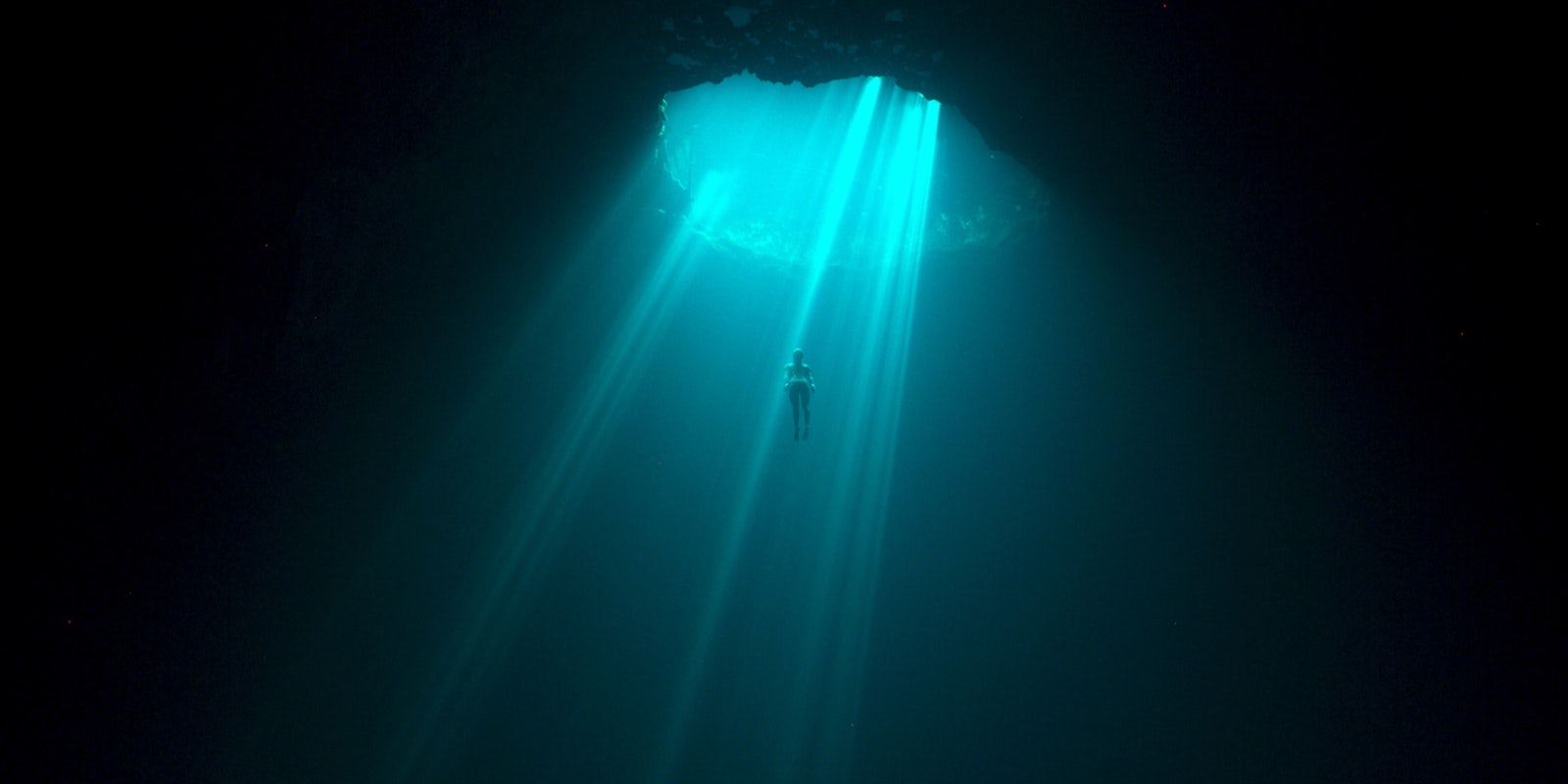Netflix’s newest documentary, The Deepest Breath, scratches the itch of stressing yourself out while watching people attempt dangerous feats.
It takes you into the world of competitive freediving, where athletes dive into a body of water to see how far down they can go in a single breath. It’s the kind of sport with incredible highs but also dangerous lows. Athletes can black out, sometimes requiring assistance to reach the surface or once they breach the water; sometimes, they might not recover.
With interviews from loved ones and colleagues, archival footage, and a narrative device that feels like a deceptive tool, Director Laura McGann parallels the stories of Alessia Zecchini, an Italian freediver who’s at the top of her sport, and Stephen Keenan, a safety diver who helps train freedivers. Once they meet, they’re practically inseparable as Zecchini sets her sights on breaking a world record at the Blue Hole, a sinkhole located off the coast of Egypt (and on the Red Sea) with a deadly reputation: “In terms of the fatalities, the Blue Hole is even more perilous than Mount Everest,” William Trubridge, a fellow freediver, says.
A similar film that comes to mind is Free Solo, the Oscar-award-winning documentary about Alex Honnold’s attempt to climb El Capitan without protective gear. But the biggest difference between Free Solo and The Deepest Breath is that you go into Free Solo knowing that Honnold is still alive at the end of it; he was a constant presence throughout that press tour and subsequent awards campaign. Whereas The Deepest Breath uses audio and narration from Zecchini and Keenan to obscure their fates, leaving you wondering and fearing how tragically this story will play out. (Unless you Google it first.) But it might’ve been a more effective choice to let us know the ending first, as Sara Dosa’s Oscar-nominated documentary Fire of Love did with volcanologists Katia and Maurice Krafft, to avoid cheapening Zecchini and Keenan’s story.
Debuting to mostly positive reviews at Sundance in January, the horror and tragedy of The Deepest Breath gained an unintended resonance last month after Netflix debuted the trailer online as the effort to search for the Titan, OceanGate’s submersible that went missing during a dive to visit the remains of the Titanic, took place.
The two stories have little in common—one involves a dangerous extreme sport, and the other was rife with safety concerns and cost-cutting measures that may have led to five people’s deaths—but the coincidental timing was awkward.
Why it matters
The Deepest Breath will only solidify what many of us already knew: We would never want to go that far into a body of water.


